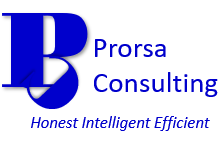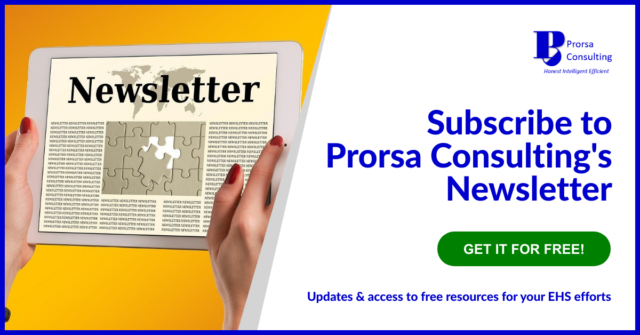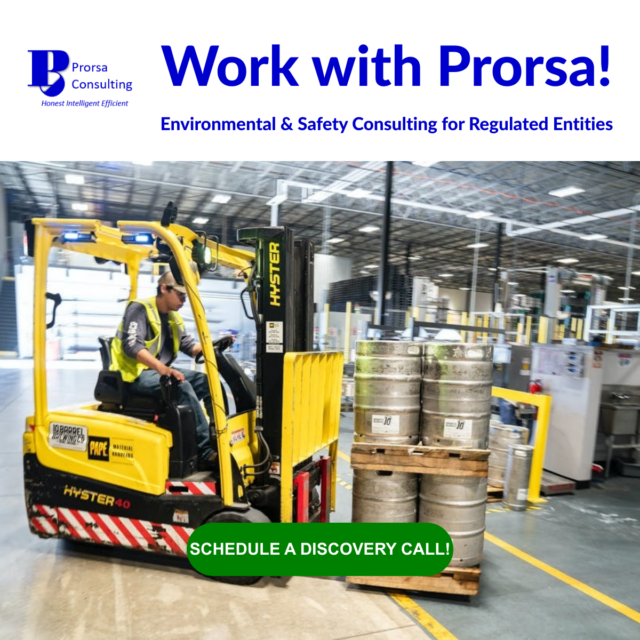Improve EHS Performance by Resolving the Poor Leadership People Never Tell You About
By : Admin -

Mediocre leadership serves as the kiss of death when trying to improve EHS performance.
Moreover, coworkers will often refuse to point to a management deficiency as a reason for failure.
Why?
It makes people uncomfortable to draw attention to others’ flaws.
Or, individuals may not feel it is their place to offer this type of feedback.
Some may fear retaliation for delivering criticism of those in authority.
Additionally, employees may feel there is no point because they don’t see the ability of the leadership to make meaningful change.
However, the truth remains . . . Leadership challenges can stifle even the best-laid plans for EHS performance improvement.
The best leaders work through their management struggles to promote environments in which EHS programs thrive.
Read on to explore the leadership link to EHS performance improvement.
Along the way, you’ll learn tips you need to ensure your management skills don’t keep your operations from success.
Disclaimer: Please be aware that this blog post may contain affiliate links and any purchases made through such links will result in a small commission for Prorsa Consulting (at no extra charge to you). Feel free to visit our Disclosure of Material Connection page for more information.
Improve EHS Performance with Leadership: Lead with Agility
Does leadership agility play that big a role in EHS performance improvement?
Yes, it does.
When improving environmental and safety performance, there will be ups and downs.
Workers experience these ups and downs.
An agile leader deals with obstacles quickly to keep everyone on track toward the end goal.
Inflexible managers often miss opportunities to adjust, keeping the ultimate targets just out of reach.

Image by Lukas on Pexels.
What traits does an agile leader embody?
Agile leadership is one that stays informed.
These leaders ask questions and actively engage.
Furthermore, they prepare for things to happen not according to plan.
Thinking ahead for the long term keeps them seen as always one step ahead of the rest.
Managers exhibiting agility use constructive feedback and data to drive EHS performance improvement.
Finally, they execute purposefully after thoughtful consideration of all sides of a problem.
Improve EHS Performance with Leadership: Practice Authenticity
How can EHS be impacted by an authentic leader?
Authenticity helps build trust, as workers get to see and know what motivates the leader.
Also, employees get a glimpse into the leader’s moral character.
This transparency allows confidence to grow around the manager’s decision-making with regards to the EHS program.
As a result, morale will increase because workers feel more valued and get to witness the leader’s care for them in the decisions made.
Moreover, true authenticity puts the leader in a position to inspire others.
When inspiration takes hold, employees gain the motivation to work toward a high vision of EHS within the organization.
The excellent EHS performance that goes with that vision will soon follow.
What characteristics define an authentic leader?
Managers who practice authenticity know themselves and mirror their truths in everyday life.
As such, subordinates are allowed to get to truly know the leader and can understand what drives them.
Furthermore, authentic individuals focus on results and not judgments.
They know that everyone makes mistakes from time to time, so they don’t dwell on them.
Respect is a fundamental belief for authentic leaders.
These leaders show respect for themselves and others and keep those around them accountable for doing the same.
Additionally, authentic leadership demands dependability and integrity to improve EHS performance.
The positive gains around trust, morale, and inspiration crumble if the leader engages in unreliable, self-serving, and/or dishonest behavior.

Image by Gerd Altmann on Pixabay.
Improve EHS Performance with Leadership: Communicate Better Than Most
Excellent communication holds an essential key to EHS performance success.
To achieve goals, people have to know what they are, what steps to take to attain them, and how to execute these steps.
This information doesn’t travel on brain waves from one individual to the next (although that might be cool).
It has to be communicated.
Well-constructed messages help keep the workforce apprised of ever changing EHS requirements and current progress toward goals.
EHS performance will not improve without these vital pieces of information.
Likewise, superb communication prevents vision and goal misalignment among the levels of an organization.
Alignment promotes a laser focus on the EHS performance end game and discourages straying to paths ending in unintended results.
If you are ready to delve further into growing your leadership skills, The 5 Levels of Leadership: Proven Steps to Maximize Your Potential could serve as your guide. Written by leadership expert, John C. Maxwell, this book outlines the leadership levels and provides the knowledge you need to successfully master each and move higher. Go ahead and take the next step to find the stellar leader inside you.
Check out The 5 Levels of Leadership Today!

Image by: John Hain on Pixabay.
What does a leader with excellent communication look like?
A leader with well-honed communication skills delivers information if a clear, open, and honest manner.
Communicating in the way only strengths the leader’s authenticity and reinforces trust.
In addition, the manager will encourage others to ask questions and give feedback.
It is assumed that others may think of things the manager may not have.
Consequently, ideas from differing sources are viewed as opportunities to improve EHS performance rather than as threats to authority.
A leader practicing superior communication will see and properly interpret non-verbal cues.
Approximately 60-65 percent of communication is presented nonverbally, according to the article Nonverbal Communication in Psychotherapy presented in Psychiatry MMC.
So, a leader can miss a lot if not picking up on nonverbal cues.
Excellent communication also happens frequently.
EHS performance improvement gains greater importance when it is reinforced often with workers.
When made a priority in this manner, the chances of efforts stalling decrease.
Last but not least, those who communicate well do not make assumptions about the other people engaged in the conversation.
These leaders emphasize good listening and ensure understanding.
They listen, relay what they just heard, and work to clarify anything that came across in a vague manner.
Remember, the results interest these leaders.
The organization’s desired EHS performance results will not be attained if mired in misinterpreted messages.
Other EHS Performance Improvement & Leadership Articles You May Enjoy
Top Management Commitment in EHS: The Surprise Defense to a Deficient Culture
Proactive Leading Indicators: Striving for the Spectacular EHS Results You Desire
Responsible Official Environmental Awareness: Your Gateway to Informed Decision-making
Risky Workplace Safety Compliance Mistakes to Recognize and Fix Before It’s Too Late
Final Thoughts
People may struggle with how to constructively criticize leadership that is lacking.
However, you cannot simply ignore subpar management if improved EHS performance is the goal.
This holds even when others fail to indicate poor leadership as a potential cause of an underperforming EHS program.
Lead with agility, practice authenticity, and communicate better than most to start resolving poor leadership.
Do not let these leadership deficiencies linger and keep your EHS performance from reaching new heights.
We encourage your feedback on our blog! Be sure to like and/or share below if you enjoyed this content. You can also provide your feedback via the Contact Us page.
Also, don’t forget to follow Prorsa on LinkedIn, Pinterest, and Twitter!
Prorsa Consulting helps regulated companies assess, maintain, and enhance
their operations’ environmental and safety compliance.
How would you like to gain access to additional, exclusive updates and information to improve your EHS efforts? All you have to do is subscribe to the Prorsa Consulting Newsletter below. Access to our resources library is included in your free subscription. So, don’t delay . . . sign-up today!





